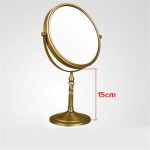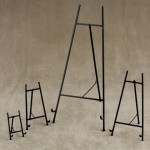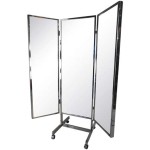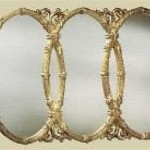How To Put A Bathroom Mirror Up On Tiles
Hanging a mirror on tiled bathroom walls presents unique challenges compared to other wall surfaces. The hard, non-porous nature of tiles makes it difficult for adhesives and traditional fasteners to grip securely. However, with the right tools and techniques, achieving a secure and aesthetically pleasing installation is achievable. This guide provides a step-by-step approach to ensure a successful outcome.
1. Assessing the Mirror and Wall
Before commencing the installation, it's crucial to assess both the mirror and the wall. Determine the mirror's weight and dimensions. Heavier mirrors will require more robust fixing methods. Inspect the tiles for any cracks or damage. A compromised tile surface can negatively impact the stability of the mirror. Identify the type of tile – ceramic, porcelain, or glass – as this will influence the adhesive selection.
2. Choosing the Right Fixing Method
Several options exist for fixing mirrors to tiles, each with its advantages and disadvantages. Adhesive-based methods, using specialized mirror adhesives or construction adhesive, are suitable for lighter mirrors. For heavier mirrors, mechanical fixings, such as mirror clips, screws and wall plugs, or a combination of both methods, provide greater security. Consider the location and size of the mirror when selecting the fixing method. Areas subject to high humidity may require more resilient adhesives or a combination of adhesive and mechanical fixings.
3. Gathering the Necessary Tools and Materials
Having the right tools and materials readily available ensures a smooth installation process. Depending on the chosen fixing method, the following items may be required: a measuring tape, pencil, spirit level, drill with appropriate drill bits for tile, safety glasses, mirror adhesive or construction adhesive, caulking gun, masking tape, mirror clips, screws, wall plugs suitable for tile, screwdriver, cleaning cloths, and rubbing alcohol.
4. Preparing the Wall Surface
Proper surface preparation is critical for optimal adhesion. Thoroughly clean the tile surface with a suitable cleaner and rubbing alcohol to remove any grease, soap residue, or dust. This ensures the adhesive can bond directly with the tile. If using mechanical fixings, mark the desired location of the screws, ensuring they align correctly with the mirror's fixing points. Pre-drilling pilot holes with a tile drill bit is crucial to prevent tile cracking during screw insertion.
5. Applying Adhesive or Installing Mechanical Fixings
If using an adhesive, apply it to the back of the mirror in a consistent pattern, following the manufacturer's instructions. Avoid applying adhesive too close to the mirror's edges to prevent it from squeezing out and creating a messy finish. For mechanical fixings, insert wall plugs into the pre-drilled holes. Then, carefully attach the mirror clips to the wall using screws, ensuring they are securely fastened. Double-check the positioning of the clips to ensure they align perfectly with the mirror's hanging points.
6. Mounting the Mirror
Carefully lift the mirror and position it against the wall, ensuring it aligns with the marked location or pre-installed fixings. If using adhesive, press the mirror firmly against the tiles for the duration recommended by the adhesive manufacturer. For mechanical fixings, carefully slot the mirror onto the installed clips, ensuring it's secure. Use a spirit level to ensure the mirror is perfectly straight both horizontally and vertically. If necessary, use small shims or spacers to adjust the mirror's position until it is level.
7. Finishing Touches
Once the mirror is securely in place, allow the adhesive to cure completely, following the manufacturer's guidelines. If using mirror clips, ensure all screws are tightened securely. Apply a thin bead of neutral cure silicone sealant around the perimeter of the mirror where it meets the tiles. This provides a watertight seal, preventing moisture from getting behind the mirror and damaging the wall. Smooth the sealant with a wet finger or a sealant smoothing tool for a clean and professional finish. Finally, carefully remove any masking tape and clean any excess adhesive or sealant from the tiles.
Following these steps will ensure a secure and long-lasting installation of your bathroom mirror. Always prioritize safety by wearing appropriate safety glasses when drilling and handling sharp objects. If dealing with a particularly heavy or large mirror, it is advisable to seek assistance from another person during the installation process.

How To Hang Mirrors On Tile 3 Ways A Bonus The Palette Muse

How To Hang Mirrors On Tile 3 Ways A Bonus The Palette Muse

How To Hang Mirrors On Tile 3 Ways A Bonus The Palette Muse

How To Hang A Mirror On Tile Wall Remington Avenue

Tutorial How To Hang A Bathroom Mirror The Diy Playbook

Tutorial How To Hang A Bathroom Mirror The Diy Playbook

Diy Mosaic Tile Bathroom Mirror Centsational Style

How To Hang A Bathroom Mirror Over Tile Wainscoting Mimzy Company

Diy Mosaic Tile Bathroom Mirror Centsational Style

Diy Mosaic Tile Bathroom Mirror Centsational Style








